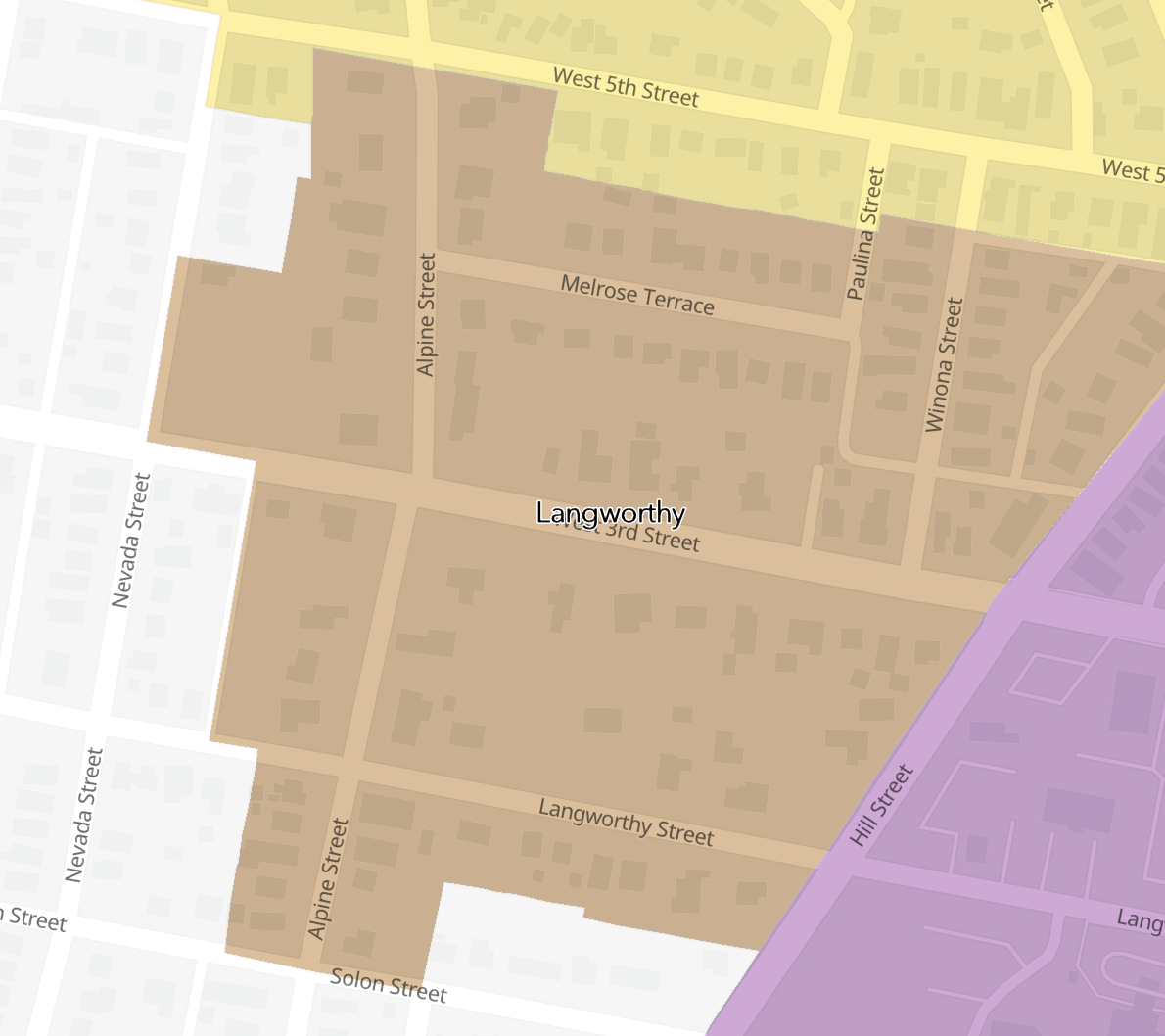Encyclopedia Dubuque
"Encyclopedia Dubuque is the online authority for all things Dubuque, written by the people who know the city best.”
Marshall Cohen—researcher and producer, CNN
Affiliated with the Local History Network of the State Historical Society of Iowa, and the Iowa Museum Association.
LORE, Antoine and LANGWORTHY NEIGHBORHOOD ASSOCIATION: Difference between pages
No edit summary |
No edit summary |
||
| Line 1: | Line 1: | ||
[[Image: | [[Image:imp14.png|left|thumb|250px|Photo courtesy: https://www.arcgis.com/apps/instant/basic/index.html?appid=ebd09e27c55443a284a36d1d641aae43]]LANGWORTHY NEIGHBORHOOD ASSOCIATION. Founded in 2002, the Association boundaries were Alpine from West 5th to Solon, Langworthy from Hill to Alpine, West 3rd from Hill to Alpine, and Melrose Terrace and Hill Street from West 3rd to Langworthy. The boundaries were exactly the same as the Langworthy Historic District, a nationally recognized historic district. (1) The group was formed to address the issues of benefits of living in a historic district. | ||
Among the eighty dwellings within the Association boundaries were examples of architecture popular in the late 1800s and early 20th century. Among the various styles found were [[QUEEN ANNE ARCHITECTURE]], [[MISSION ARCHITECTURE]], [[PRAIRIE ARCHITECTURE]], [[ITALIANATE ARCHITECTURE]], [[DUTCH COLONIAL REVIVAL]], [[CLASSICAL REVIVAL ARCHITECTURE]] and [[AMERICAN FOURSQUARE ARCHITECTURE]]. There were even examples of [[VOELKER STONE]]. (2) In 2010 one of the greatest accomplishments of the Association was changing all the zoning in the area to R1 since the majority of the properties had originally been built for single family homes. | |||
Meetings held several times annually included the "Wine Before Nine" parties for adults where the host opened their house to neighbors who brought a dish to pass and their beverage of choice. When the clock reached 9:00 p.m. the party ended. Events also included an annual summer picnic with food and games. An annual neighborhood clean-up along streets and alleys began with a breakfast snack. (3) | |||
--- | --- | ||
| Line 9: | Line 10: | ||
Source: | Source: | ||
" | 1. "Neighbor Associations and Councils are Catalysts for Chance and Action," '''Julien's Journal''', March 2010, p. 69 | ||
2. Ibid. | |||
3. Mozena, Terry. "Langworthy Historical District Neighborhood Association," '''Julien's Journal''', March 2013, p. 28 | |||
[[Category: | [[Category: Neighborhood Associations]] | ||
Latest revision as of 20:27, 26 July 2025
LANGWORTHY NEIGHBORHOOD ASSOCIATION. Founded in 2002, the Association boundaries were Alpine from West 5th to Solon, Langworthy from Hill to Alpine, West 3rd from Hill to Alpine, and Melrose Terrace and Hill Street from West 3rd to Langworthy. The boundaries were exactly the same as the Langworthy Historic District, a nationally recognized historic district. (1) The group was formed to address the issues of benefits of living in a historic district.
Among the eighty dwellings within the Association boundaries were examples of architecture popular in the late 1800s and early 20th century. Among the various styles found were QUEEN ANNE ARCHITECTURE, MISSION ARCHITECTURE, PRAIRIE ARCHITECTURE, ITALIANATE ARCHITECTURE, DUTCH COLONIAL REVIVAL, CLASSICAL REVIVAL ARCHITECTURE and AMERICAN FOURSQUARE ARCHITECTURE. There were even examples of VOELKER STONE. (2) In 2010 one of the greatest accomplishments of the Association was changing all the zoning in the area to R1 since the majority of the properties had originally been built for single family homes.
Meetings held several times annually included the "Wine Before Nine" parties for adults where the host opened their house to neighbors who brought a dish to pass and their beverage of choice. When the clock reached 9:00 p.m. the party ended. Events also included an annual summer picnic with food and games. An annual neighborhood clean-up along streets and alleys began with a breakfast snack. (3)
---
Source:
1. "Neighbor Associations and Councils are Catalysts for Chance and Action," Julien's Journal, March 2010, p. 69
2. Ibid.
3. Mozena, Terry. "Langworthy Historical District Neighborhood Association," Julien's Journal, March 2013, p. 28


